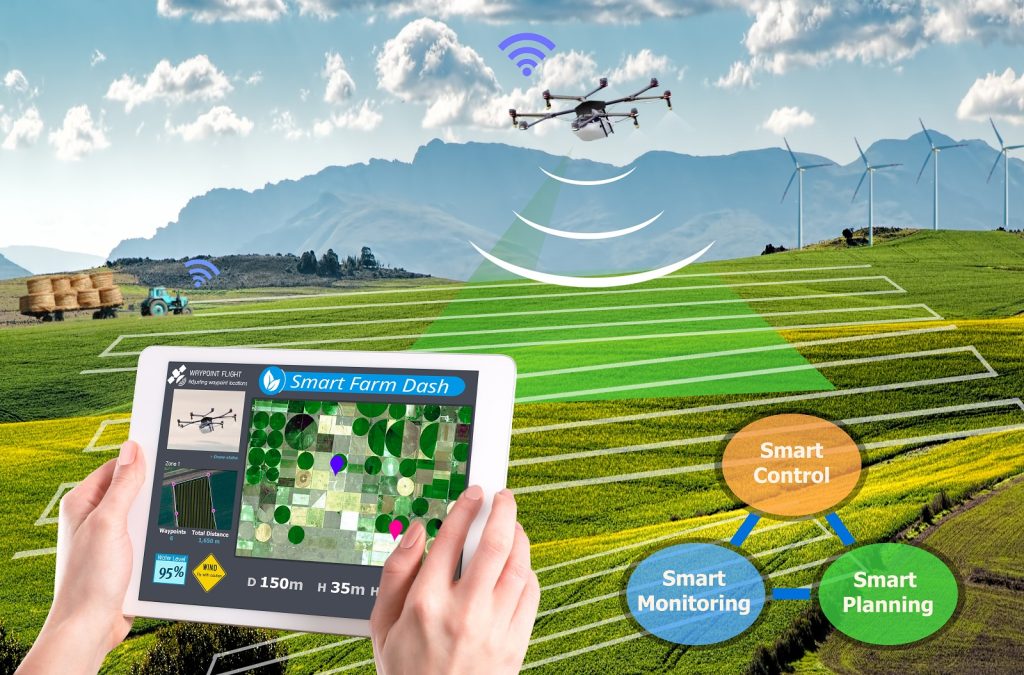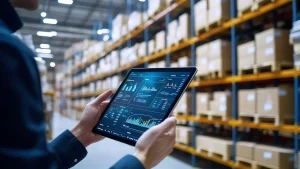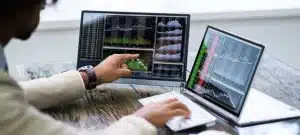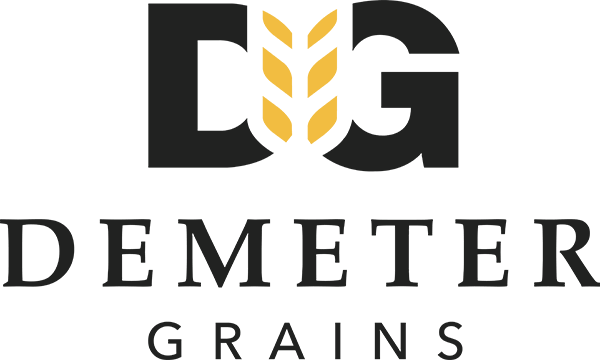Introduction
Precision agriculture, also known as precision farming, has changed the landscape of modern agriculture drastically. The main goal of this type of high-tech farming is to get the highest yield, sustainability, and maximum production. Every step of farming, from planting to harvesting, has become more affordable for farmers because of precision farming tools and technology, which focus on operational efficiency.
This blog covers the main aspects of precision agriculture. Let us explore the advantages, practices, precision ag equipment, and technologies that are changing the face of modern agriculture.
What is precision farming?
Precision agriculture is used to give crops and soil with accurately measured amounts of nutrients in order to ensure excellent health and increase yields. In precision farming, rich, accurate data management solutions are used to monitor and control field variances in order to maximize crop production. As a result, precision agriculture adds to environmental sustainability, waste reduction, and increases crop profitability.
Basically, precision farming consists of new technologies such as data analytics, drones, GPS mapping, sensors, and Internet of Things devices. These technologies offer the latest information on weather patterns, crop health, soil conditions, and other important factors.
A brief history of precision agriculture
Precision farming, also known as precision agriculture, has developed significantly in the past years. Methods for sustainable agriculture have been promoted by the combined effect of modern advancements and the growing social problem of environmental change and global food security.
The idea of precision agriculture, although it is still in its early days, was born as a result of advancements in Global Positioning System (GPS) technology that began to appear in the 1980s and made it easier to gather geographic data on farms. This progress is not without difficulties, though, as merging these technologies calls for an entire change in conventional farming practices.
Precision agriculture started a new phase in the early 2000s with the introduction of cheap sensors and high-speed internet. Cloud computing and wireless networking make real-time data collection and analysis easy. The 2010s discovered the merge of big data analytics, the Internet of Things, and artificial intelligence (AI) in agriculture.
How does precision agriculture work?
Precision agriculture depends on specialized tools, software, and IT services to function. In addition to other related information like labor prices, equipment availability, and hyperlocal weather forecasts, this also requires access to real-time data on crop, soil, and ambient air conditions.
Sensors in fields that measure the temperature and moisture content of the soil and surrounding air are used for collecting the data in real-time. Farmers may also get real-time photos of individual plants via unmanned drones and satellites.
What is an example of precision agriculture?
One of the precision agriculture examples is the use of drones equipped with multispectral sensors to monitor crop health.
Farmers use drones, which have completely changed farming methods to fly over their fields and take high-resolution photos and data in a variety of light wavelengths. These images from the sky may be used to identify information about water stress, insect infestations, plant survival, and nutritional problems. For example, weaker plants show clear differences in light reflection when compared to healthy ones. By applying this information, farmers can make focused decisions like applying fertilizer, water, or pesticides just where they are needed instead of randomly over their fields.
The use of drones by farmers in large-scale agricultural operations in the United States to locate crop areas suffering from nitrogen absence is important. By concentrating on these particular areas, they carefully use nitrogen fertilizers just where they are considered to be required, which reduces expenses and decreases negative environmental effects. However, this process requires a great knowledge of drone technology and how precision agriculture uses it.
This action develops efficiency, reduces waste, and supports sustainable farm practices.
What are the 5 R’s of precision agriculture?
By making sure that the right decisions are made at every stage of the process, the 5 R’s of precision agriculture provide a foundation for farming that is both efficient and sustainable. They are:
Right input
Applying the right kind of input, whether it is seeds, fertilizers, or pesticides, based on the particular requirements of the soil and crops.
Right amount
Ensuring inputs are used in precise quantities to avoid over-application or under-application, optimizing resources, and minimizing waste.
Right place
Delivering inputs to the exact location within a field where they are needed, guided by tools like GPS mapping and remote sensing.
Right time
Timing is crucial. Inputs should be applied when they will be most effective, such as during specific growth stages or optimal weather conditions.
Right technology
Using new hardware and software, including automatic machines, drones, and Internet of Things sensors to apply precision agriculture concepts and techniques successfully.
In addition to boosting output, this strategy promotes cost-effectiveness and environmental sustainability in modern agriculture.
Types of precision agriculture
Precision agriculture includes various types, each focusing on the different sides of farming:
Crop precision agriculture: This type involves monitoring and managing crops for better yields using sensors, drones, and predictive analytics.
Livestock precision agriculture: Technology is used to monitor the health, behavior, and productivity of animals. For instance, wearable devices can track vital signs in dairy cattle.
Aquaculture precision agriculture: Sensors and automated systems manage water quality, feeding, and disease control in fish farming.
Forestry precision agriculture: Forestry operations use precision procedures to keep an eye on insect infestations, growth trends, and tree health.
What are the benefits of precision agriculture?
Because of its many advantages, precision agriculture is an essential part of modern agriculture:
Increased efficiency
By carefully applying resources where they are required, farmers may save production costs and waste.
Enhanced crop yields
Better decision-making can be made possible by real-time data, which results in healthier crops and higher yields. Precision ag products are used widely for this reason.
Sustainability
By using less water, fertilizer, and pesticides, precision agriculture reduces its negative effects on the environment.
Cost savings
Targeted inputs and automated precision ag equipment lower labor expenses and resource usage.
Better resource management
Farmers can better control water, fertilizers, and other resources with the use of tools like weather monitoring systems and soil sensors.
Precision agriculture vs traditional cultivation
The approach, efficiency, and impact of precision agriculture and traditional cultivation are very different. New technologies like sensors, drones, and GPS are used by precision agriculture to provide accurate data on weather, crops, and soil. This data-dependent method guarantees the accurate use of resources like water, fertilizer, and pesticides, reducing waste and environmental impact while increasing crop yields.
On the other hand, traditional agriculture depends on physical labor and standard procedures, which frequently leads to resource wastage and uneven yields. While traditional approaches require expertise and observation, which can be slower and less precise, precision agriculture is extremely efficient, automating procedures and facilitating prompt, well-informed decision-making.
Traditional farming may damage soil and pollute water due to excessive resource usage, while precision agriculture improves sustainable practices by minimizing chemical runoff and water waste.
In the end, precision farming is the farming method of the future as well, but a hybrid strategy that combines its advantages with the efficiency of conventional techniques could be a great solution.
Tools and technologies for precision farming
The usage of new tools and supplies is essential for precision farming success and better precision ag products. Some of the most well-known tools and technologies are as follows:
Drones
High views of fields are provided by drones fitted with multispectral cameras, which assist farmers in spotting insect infestations, nutritional deficits, and stressed crops.
GPS-enabled tractors
These tractors use satellite positioning to navigate fields with precision, ensuring accurate planting and tilling.
IoT sensors
Soil moisture sensors, weather stations, and other IoT devices collect real-time data for better decision-making.
Precision ag products
These include software platforms that analyze data from sensors and provide actionable insights.
Variable Rate Technology (VRT) equipment
Seeders, sprayers, and spreaders equipped with VRT ensure optimal application of inputs.
Robotics
Autonomous robots are used for planting, weeding, and harvesting, reducing the need for manual labor.
Use cases for precision agriculture
Previously, only larger businesses could afford the IT infrastructure and other technological resources needed to implement and experience the benefits of precision agriculture fully.
However, modern farming cooperatives and even small family farms may now use precision agriculture because of smartphone applications, smart sensors, drones, and cloud computing.
Some of the most popular applications for precision agriculture today include:
Agricultural mapping and field scouting
Drones equipped with cameras can create high-resolution maps of fields. This data can identify problem areas, track crops, and assess yield potential.
Soil sampling and analysis
Mobile apps can collect data about soil type, fertility, moisture content, and more. This information can decide about irrigation, fertilization, and other aspects of crop management.
Weather monitoring
Hyperlocal weather data can help users decide when to plant, how much water to give crops, and when to harvest.
Labor management
GPS-enabled mobile apps can track the location and activity of workers in the field. This data can optimize workflows and ensure that tasks are completed efficiently.
Equipment management
Precision farming could help farmers monitor their equipment, schedule maintenance, and make repair plans, as agricultural equipment is costly.
Impact of precision agriculture on sustainable farming
Precision farming is a key factor in improving sustainable agriculture. It solves necessary issues, including soil degradation, water shortages, and climate change, by increasing resource usage and reducing environmental impact. Key contributions include:
Reduced chemical usage: Pollution and waste are decreased by the controlled use of pesticides and fertilizers.
Efficient water management: Water is used efficiently and wisely because of IoT-enabled irrigation devices.
Improved soil health: Farmers can maintain soil fertility and avoid overexploitation by doing soil testing and monitoring.
Carbon footprint reduction: Automated machinery and efficient resources use lower greenhouse gas emissions.
Future of precision agriculture
As technology continues to evolve, the future of precision agriculture looks promising. Emerging trends include:
Artificial intelligence and machine learning: AI-powered solutions will provide automated decision-making and more accurate predictions.
Blockchain in agriculture: The food supply chain may be made transparent and accessible with blockchain technology.
Next-generation drones: More advanced drones with improved imaging capabilities will offer more in-depth information.
Integration with renewable energy: Precision farming will become more sustainable with solar-powered equipment and sensors.
How can AgriChain help?
AgriChain is one of the widely known precision agriculture companies. By offering a smooth, data-driven platform that improves productivity, openness, and cooperation throughout the agricultural supply chain, it improves precision agriculture. By collecting and sharing real-time data, AgriChain helps improve crop planning and resource optimization decision-making.
AgriChain lowers supply chain costs, speeds up time to market, and decreases waste using end-to-end visibility, automated procedures, and effective inventory management. Its visibility and sustainability elements are completely in line with precision farming objectives of increasing production and profitability while minimizing environmental effects, and its user-friendly tools guarantee smooth communication among stakeholders.
Conclusion
Precision farming is changing food production for the better through sustainable and efficient farming. It is possible to choose from the endless list of the latest precision ag equipment, including drones and Internet of Things sensors, or simply purchase goods from one of the top precision agriculture companies. Precision farming will continue to be searching for improving global food security and sustainable agriculture as technology improves.
FAQs on Precision Farming
How does precision agriculture increase agricultural efficiency and productivity?
By giving farmers the ability to make data-dependent decisions, precision agriculture increases agricultural efficiency and productivity. Variable rate technology (VRT) and GPS-guided equipment are two examples of technologies that enable accurate watering, fertilization, and planting while guaranteeing the best possible use of available resources. Farmers may address individual problems rather than treat entire fields equally by using real-time data on crop conditions and soil health provided by remote sensing and soil sensors. This focused strategy maximizes productivity on the same land area by lowering waste, enhancing crop health, and increasing yields.
How does precision agriculture help reduce input costs?
By using resources like water, fertilizer, and pesticides only when necessary, precision agriculture lowers input costs. In order to minimize overuse, variable rate technology (VRT) makes sure that inputs are supplied at the best rates depending on crop and soil conditions. By improving productivity and reducing human error, automatic precision ag equipment and drones later on reduce labor and operating expenses. Predictive analytics and real-time detection can also help farmers to identify possible issues before they occur which can help in reducing the need for expensive treatments.
How does precision agriculture help with environmental sustainability?
Precision agriculture supports environmental sustainability by minimizing resource waste and lowering the environmental imprint of farming. Controlled application of fertilizers and pesticides reduces waste and soil contamination. Water-efficient irrigation technologies like drip irrigation paired with IoT sensors preserve water resources. Precision farming contributes to the fight against climate change by optimizing inputs and lowering greenhouse gas emissions from excessive machinery usage. Long-term land productivity is also influenced by sustainable measures like crop rotation and soil health monitoring.
What are the challenges of precision agriculture?
Precision agriculture may not be widely adopted due to certain challenges. One of the major obstacles is the high initial cost of modern instruments like drones, IoT sensors, and GPS-guided equipment, especially for small-scale farmers. Also, farmers who lack sufficient training may find it challenging to properly employ the technology due to the learning curve associated with the technical skills required to operate and understand data from these precision ag equipment.
The efficiency of IoT devices and cloud-based systems is further limited by connectivity issues in rural areas, as many farming regions lack dependable internet access; managing and analyzing the huge amounts of data generated by precision farming tools is another challenge that requires skilled personnel and robust software; and scalability is still a problem because it can be difficult and resource-intensive to adapt precision agriculture concepts and techniques to different crops, climates, and regions.
What are the components of precision farming?
To maximize agricultural operations, precision farming depends on a number of essential elements. Sensors, drones, and satellite photos are examples of data-collecting equipment that offer complete details on weather patterns, crop conditions, and soil health. In order to ensure effective resource use, Variable Rate Technology (VRT) is essential as it permits site-specific applications of inputs such as seeds, fertilizer, and herbicides. Accurate field mapping and automated machinery navigation are made possible by GPS and GIS systems.
Real-time field conditions, such as soil moisture, temperature, and crop growth, are monitored by IoT devices and smart sensors; data analytics software is another crucial element that analyzes gathered data to produce actionable insights for decision-making; and automated precision ag equipment, like robotic harvesters and GPS-guided tractors, improves planting, tilling, and harvesting efficiency. All of these elements work together to form a highly integrated system that maximizes productivity while minimizing resource waste.












